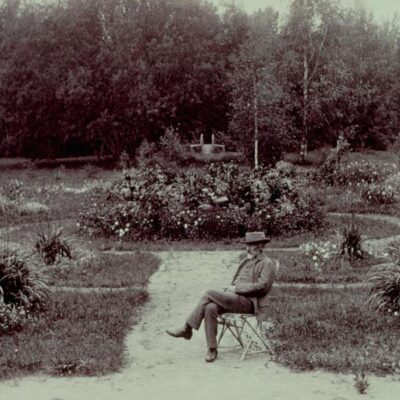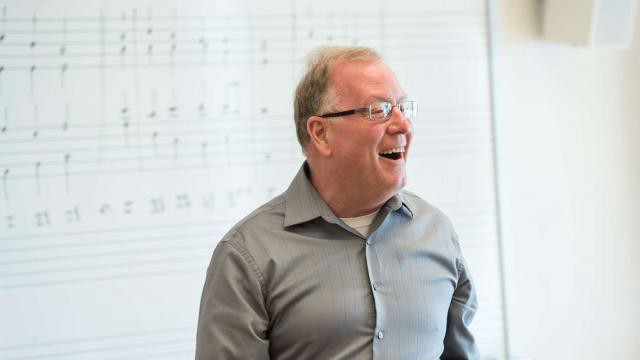
Zoltan Kodály (1882–1967)
Dances of Galánta (1933)
If Zoltan Kodály ever resented his chronic second-banana status to friend and colleague Béla Bartók, he never let on. But it must have rankled. Bartók biographies invariably describe how, in his salad days, he traipsed through the backwaters of Eastern Europe, Edison cylinder recorder in tow, in search of authentic folk music. And, oh yes, Kodály was there, too. Then we discover how those investigations transformed Bartók’s musical style, how he eventually grew beyond his use of folk music and became a composer of universalist stature, and how he was eventually compelled to leave his beloved Hungary amidst the growing horrors of WWII. And, oh yes, Kodály did some of that too, but he stayed home.
Kodály remained dedicated to the cause of a native Hungarian music even through the terrible years following the war. Outliving Bartók by a quarter century, he pursued a three-part career as composer, teacher, and ethnomusicologist—i.e., he studied native folk music—with notable successes in all three areas. His achievements in teaching music to young children remain bedrock technologies to this day. As a composer he is particularly admired for a bouquet of exquisite orchestral works, among which the Dances of Galánta have achieved solid repertory status. Kodály himself provided a commentary:
“Galánta is a small Hungarian market town known to travelers between Vienna and Budapest. The composer passed seven years of his childhood there. … About 1800 some books of Hungarian dances were published in Vienna, one of which contained music ‘after several Gypsies from Galánta.’ In order to keep it alive, the composer has taken his principal themes from these old publications.”
Anna Clyne (b. 1980)
DANCE for Cello and Orchestra (2020)
800 years ago the Sufi poet Rumi (Jalāl al-Dīn Muḥammad Rūmī) sang eloquently about the human condition. His topics were universal and timeless: grief and reconciliation, enmity and harmony, turmoil and peace. His was a vision of inner tranquility, freed from the hostility and fear that have so afflicted humanity throughout its history.
Shahram Shiva tells us that “Rumi is able to verbalize the highly personal and often confusing world of personal growth in a very clear, and direct fashion. He does not offend anyone, and he includes everyone.” Rumi was passionately devoted to music, poetry, and dance as components of the path to liberation. He encouraged Sama, sacred dance that seeks a unity of spirit, mind, and heart.
Thus London-born composer Anna Clyne finds inspiration in Rumi’s exhortation for us to dance even in the midst of our suffering:
Dance, when you’re broken open.
Dance, if you’ve torn the bandage off.
Dance in the middle of the fighting.
Dance in your blood.
Dance, when you’re perfectly free.
Each of DANCE’s five movements takes its character from its respective line of the poem. A cello concerto in all but name, it honors Clyne’s early musical training on the cello and re-connects with her deep love for the instrument. The work’s abundant lyricism reflects Clyne’s heritages—Jewish from her father, Irish and English from her mother.
DANCE is permeated with melody throughout. (So much for the bromide about contemporary music lacking memorable tunes.) Furthermore, listeners have remarked upon the work’s utter lack of pretension and its abiding mood of compassion even in its most stress-wracked moments.
Myroslav Skoryk (1938–2020)
Melody for Symphony Orchestra (1982)
The Soviet war film Vysokyy pereval (The High Pass) might be unknown in the west, but the beguiling and heartfelt “Melody” written for the film by Ukrainian composer Myroslav Skyork has become an anthem of hope in the midst of the devastating Russian invasion of Ukraine. During an address to the United States Congress by Ukrainian President Volodymyr Zelenskyy in March 2022, “Melody” accompanied a video of the destruction of Ukraine.
The piece, based on patterns common to Ukrainian folk music, was originally written for flute and piano but has since been provided with numerous alternate settings, including for full orchestra.
Peter Ilyich Tchaikovsky (1840–1893)
Symphony No. 2 in C Minor, Op. 17 “Ukrainian” (1872/1880)
Here’s the problem with basing a symphony on folk songs: folk songs are short and symphonies are long. One might think that would limit things to the occasional folk tune tucked in here or there, but in the right hands folk music can be used extensively and organically. Mikhail Glinka, patriarch of Russian symphonic composers, demonstrated how to do it in his pathfinding Kamarinskaya, based on two folk songs (one of which is, not surprisingly, “Kamarinskaya.”) Glinka takes these (short) songs on a spectacular journey, interweaving them in a giddy symphonic pas de deux.
Kamarinskaya stands godparent to Tchaikovsky’s Symphony No. 2 in C Minor, Op. 17, particularly in its final movement, which weaves a Ukrainian folk song (“The Crane”) and a freshly-composed melody into a rich tapestry of color and propulsive rhythm. The movement is amongst Tchaikovsky’s most impressive feats and was recognized as such from the get-go. In fact, the entire symphony was hailed by all and sundry, including the notoriously hard-to-impress group of young composers who had been dubbed the moguchaya kuchka or “mighty bunch” by critic Vladimir Stasov. On the whole Tchaikovsky didn’t really care what the kuchka thought; he viewed them as obnoxious fanatics about nativist Russian music, whereas his overall afflatus was cosmopolitan rather than local. Nonetheless he was pleased by their approval as well as the symphony’s overall public success at its premiere on February 7, 1873.
He wasn’t that pleased, however. Tchaikovsky tended to dislike his own works, no more so than after their premieres. In 1880 he took the symphony back into the shop and gave it a thorough re-working, providing a mostly new first movement and a streamlined finale.
The finale isn’t the only movement to incorporate folk songs; the first movement takes a Ukrainian version of “Down by Mother Volga” for its main theme and the second movement quotes the Ukrainian song “Spin, O My Spinner.” Considering that the work incorporates Ukrainian rather than Russian sources throughout, there’s really no reason to continue to refer to it as the “Little Russian” symphony, that being the old Tsarist name for Ukraine. Current thinking is coming to prefer going directly to the source and re-naming it the “Ukrainian” symphony, not only for its enthusiastic and masterful use of its folk materials, but above all, for its unabashed sweep and energy.
Program Annotator Scott Foglesong is the Chair of Musicianship and Music Theory at the San Francisco Conservatory of Music, and a Contributing Writer and Lecturer for the San Francisco Symphony. He also leads the California Symphony’s ground-breaking music education course for adults Fresh Look: The Symphony Exposed.
The California Symphony’s INTERSECTIONS featuring cellist Inbal Segev takes place Saturday, September 10 at 7:30 PM and Sunday, September 11 at 4 PM at the Lesher Center for the Arts. Tickets are $49 to $79. Buy tickets online or call or visit the Lesher Center Ticket Office at 925.943.7469, Wed – Sun, 12:00 noon to 6:00 pm.



